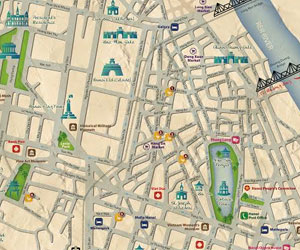9 Must-visit Temples and Pagodas in Hanoi Old Quarter
If you are a culture addict, do not miss a single opportunity to venture into one of many religious landmarks in Hanoi Old Quarter.
In 2025, visitors to Hanoi will not only experience a significant aspect of daily life in the city but also gain insight into its rich religious practices.
Here are some top attractions for visitors:
Bach Ma Temple
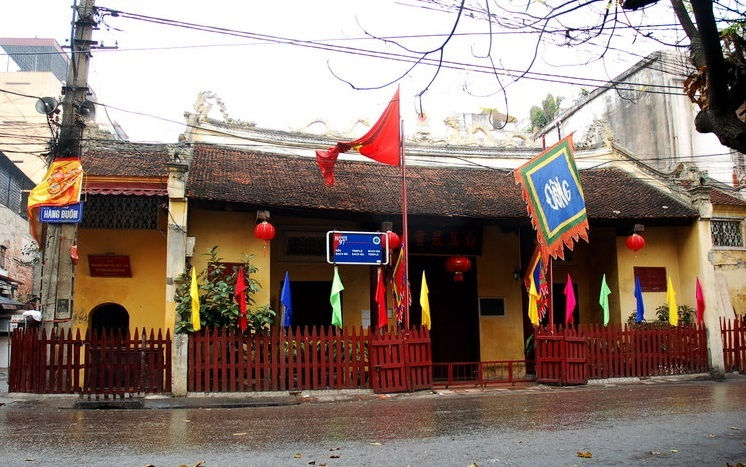 Bach Ma Temple - Photo: Cong Ly News
Bach Ma Temple - Photo: Cong Ly News
According to legend, when the great citadel was originally constructed in Thang Long (now Hanoi) in 1010, the wall would collapse despite the workers' best efforts, due to the marshy ground. One night, while praying, the king dreamt of a white horse directing him to a favorable building site. Realizing this was a sign, King Ly Thai To shifted the construction site, which led to the successful completion of the citadel. To honor the white horse's guidance, Bach Ma Temple was established in the heart of the Hanoi Old Quarter. Although the temple has endured severe damage over centuries from floods and other calamities, it was rebuilt in the 18th century while preserving key features, including the statue of the legendary white horse and the palanquin.
Dong Huong Temple
Situated on Hang Trong Street, Dong Huong Temple is dedicated to a Ca Tru singer (Ca Tru is Vietnam’s distinctive form of poetic singing, recognized as a UNESCO heritage in 2009) who fiercely resisted invaders in the 15th century. The tale recounts that during the Le Dynasty, Ming aggressors invaded the country. A beautiful singer used her enchanting voice to lure the enemy into a trap, leading to their demise. Recognizing her bravery, the king erected the temple to pay tribute to her nationalism. Nestled within the Hanoi Old Quarter, Dong Huong Temple stands as a testament to the locals' pride in their rich patriotic heritage.
Nam Huong Temple
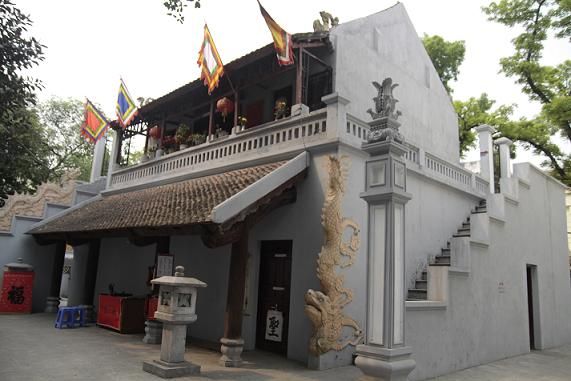 Nam Huong Temple
Nam Huong Temple
Nam Huong Temple, located on the second floor of Hang Trong Street, is dedicated to the worship of the Five Gods. This temple also serves as a community hub for Hang Trong village, hosting various monthly events. Historically, this area was a cultural center, home to many revered poets and writers. Within the temple, visitors can admire numerous art pieces dating back to the 18th century.
Cau Dong Temple
Positioned at 35B Hang Duong Street, Cau Dong Temple is devoted to Buddha, as well as General Tran Thu Do and his wife, Tran Thi Dung, who played key roles in the Tran Dynasty's prosperity. The temple features over 60 Buddhist statues and numerous stone steles, some dating back to 1624 during the Le Dynasty, along with the Tay Son Bell from 1800. Having witnessed historical transitions, its architecture showcases the essence of various dynasties through successive restorations. While the current structure reflects the Nguyen Dynasty's influence, elements from the Le Dynasty can still be seen in its intricate carvings of clouds, flowers, and dragons, providing visitors a glimpse into the historical social fabric of the area.
Hoe Nhai Pagoda
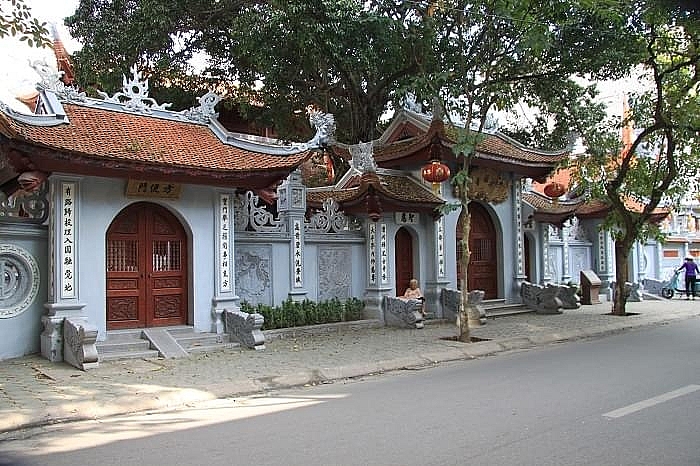 Hoe Nhai Pagoda on Hang Than street
Hoe Nhai Pagoda on Hang Than street
Hoe Nhai Pagoda, or Hong Phuc Pagoda, located at 19 Hang Than Street, was once one of the largest Buddhist pagodas during the Ly Dynasty (1010-1225). The pagoda is home to around 68 Buddhist statues, including a notable statue of a newborn Shakyamuni called Cuu Long, and 28 stone steles from the 18th century. A distinct statue of Buddha depicts him seated on the back of a kneeling king, symbolizing repentance after King Le Hy Tong dismissed numerous Buddhist monks. Hoe Nhai Pagoda is recognized as the cradle of the Soto sect (Tao Dong), one of Vietnam's two main Buddhist sects.
Ba Da Pagoda
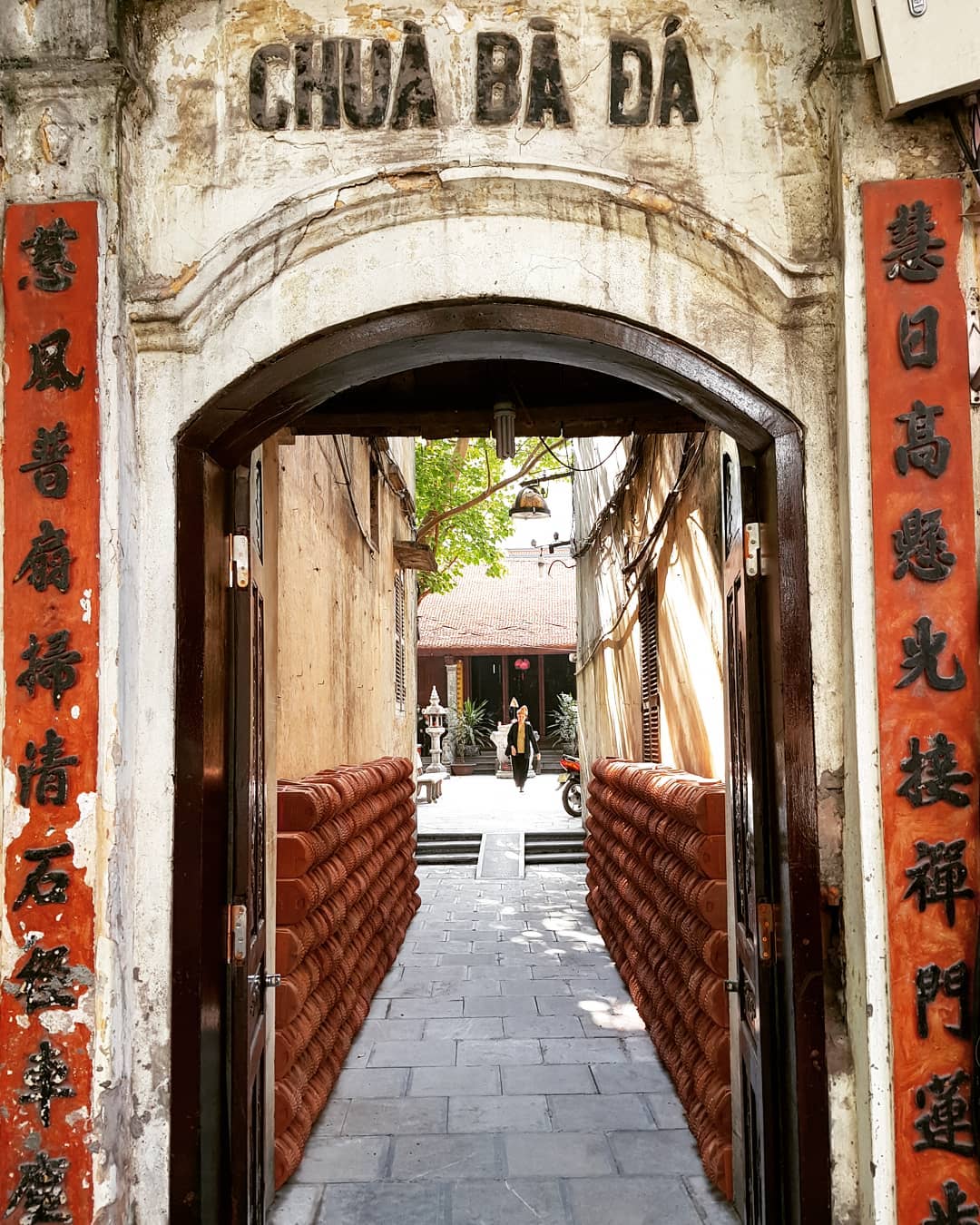 Ba Da Pagoda - Photo instagram @chryshijing
Ba Da Pagoda - Photo instagram @chryshijing
Ba Da Pagoda, located at 3 Nha Tho Street, traces its origins back to the Ly Dynasty (1010 – 1225) and has been reconstructed multiple times. The story tells of a large stone resembling a woman found during the Thang Long citadel's construction, believed to be a divine sign. To honor the Goddess of the land, the locals built a pagoda named Ba Da (The Stone Lady). Despite the stone's disappearance during renovations and eventually being lost in a fire in the early 1900s, a statue of Buddha now stands in its place, although the original name endures. The pagoda holds historical significance as it was visited by Ho Chi Minh in the 20th century to engage with the monks in his revolutionary efforts against French colonialism. Ba Da Pagoda is currently the headquarter of the Municipal Buddhist Association.
Ly Quoc Su Pagoda
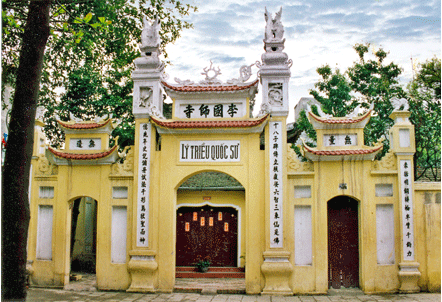 Ly Quoc Su Pagoda - Photo @giacngo.vn
Ly Quoc Su Pagoda - Photo @giacngo.vn
Constructed in 1131 on Ly Quoc Su Street, Ly Quoc Su Pagoda was built to commemorate Nguyen Minh Khong, a celebrated Buddhist monk from the Ly Dynasty. He was known for curing King Ly Than Tong of a grave illness, which earned him the title Ly Quoc Su, or the Great Monk of the Ly Dynasty. Throughout his life, Nguyen Minh Khong made significant contributions to Buddhism, medicine, and bronze casting. Following his death, the king constructed this pagoda in tribute to his dedication to the people. Visitors can admire the architecture and numerous historic statues within the pagoda, as well as sample vegetarian dishes prepared by the resident monks.
Phu Ung Temple
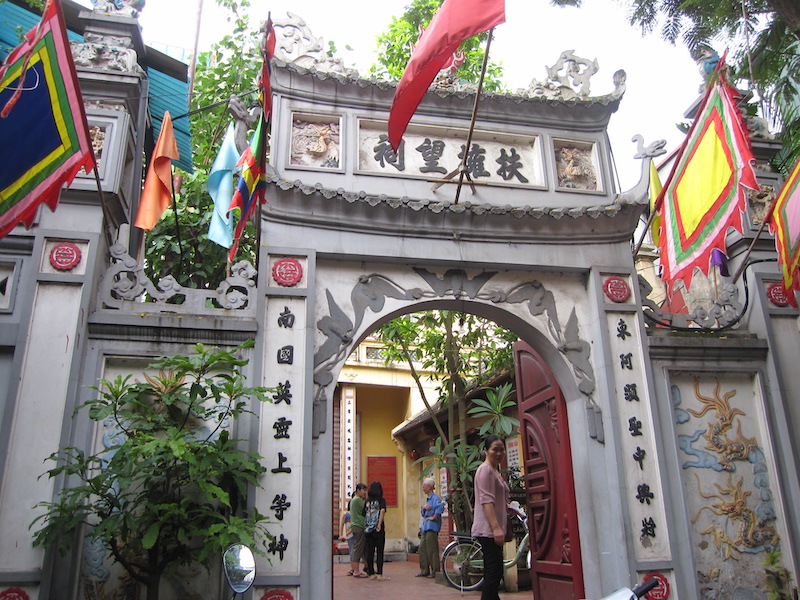 Phu Ung Temple
Phu Ung Temple
Phu Ung Temple, located on Ly Quoc Su Street, was built by local villagers to honor Pham Ngu Lao, a national hero. It is an intriguing site for visitors, offering a serene atmosphere that allows them to appreciate the stunning Buddhist statues inside the temple.
Ngoc Son Temple
 Ngoc Son Temple - Photo @mytour
Ngoc Son Temple - Photo @mytour
Ngoc Son Temple is one of Hanoi's most iconic attractions, situated on a small island in Hoan Kiem Lake. Dedicated to the Confucian philosopher and national hero, Tran Hung Dao, it is frequently visited by both locals and tourists. Visitors cross the picturesque scarlet Huc Bridge to reach the temple, surrounded by serene waters and ancient trees. During special occasions like Tet Holiday, residents flock to Ngoc Son Temple to pray for good fortune in the coming year, particularly in their careers and studies. While visiting, tourists can also explore nearby historical sites such as Thap But (the Pen Tower), a five-story structure symbolizing Vietnam's reverence for education, and the Martyrs' Monument, commemorating those who sacrificed their lives for national independence.
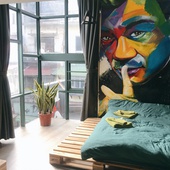
10 Best Airbnbs For Your Stay In Hanoi Old Quarter
When you visit Hanoi, a city of long-lasting history and rich culture, won’t it be a bargain to stay in an Airbnb that you could have the most genuine travel advice from local host while enjoying your own private space with well-supplied amenities? If you are a fan of this alternative accommodation, find our short-list below.
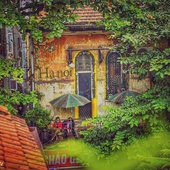
10 Best Cafes in Hanoi Old Quarter
Hanoi Old Quarter, with its myriad of cafes, is the ideal place to start your coffee hunt, all the way watching the continuous rush of people and the time lapse on each street.
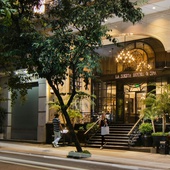
15 Best Boutique Hotels In Hanoi Old Quarter
The Old Quarter of Hanoi has been thriving since the 19th century, when it was a major trading area among Hanoians in the old time. The huge number of boutique hotels in the Old Quarter will not break your bank and offer all that you need for your stay, and in style. Browse our listings above and pick what you need.



